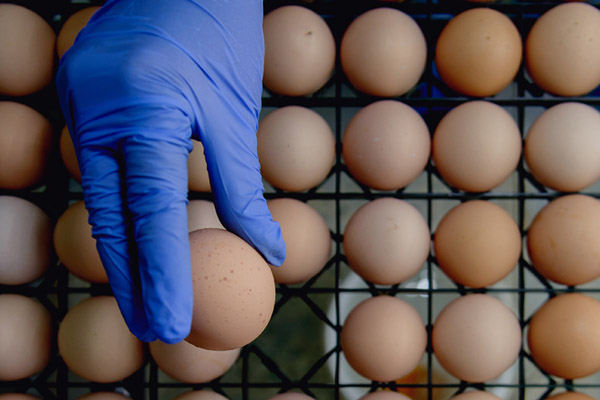Product recalls are made by traders about items that have problems which could affect the safety of the consumer. Most retailers state that the product should not be used and should be returned to the trader. In 2017 there were numerous recalls ranging from baked goods to noodles.
The Food Standards Agency issued several notices about product recalls from supermarkets in 2017. Tesco recalled one of its finest chocolate cake products because it may have contained walnuts, which were not mentioned on the label. This means that the cake posed a health risk for anyone with an allergy to nuts. Fabulous Foods (UK) also recalled their king soba organic buckwheat noodles which claimed to be wheat and gluten free, however it may have contained gluten which they did not mention on the label. This means the product could have been a possible health risk for anyone with an allergy or intolerance to gluten.
Supermarket Waitrose had a confectionary crisis when they announced four of the chocolate that it sells would be taken off the shelves. Waitrose White Chocolate, White Chocolate with Matcha Tea and Pistachio, Milk Chocolate with Pistachio, Almond and Hazelnut, and Milk Chocolate with Feuilletine & Sea Salt were removed because it could have been contaminated with plastic traces.
In the meat category there were many mishaps. Firstly Sainsbury’s announced that it was recalling certain batches of its Taste the Difference Aberdeen Angus British Beef Quarter Pounders because Public Health England identified a small number of cases with the E. coli O157 infection. As a precautionary measure, Sainsbury's took it away. Aldi had a poultry problem when it recalled its Rooster’s Southern Fried Poppin’ Chicken over concerns that small pieces of hard plastic which could present a safety risk were present, and The Farmer's Son recalled various products such as black/white pudding and haggis products because of concerns over the company's procedures in place to control Clostridium botulinum – a toxin that could cause a serious form of food poisoning.
With all of these recalls, which category tops the chart and how does the industry plan on fixing this concerning problem?
The Rise in Recalls
According to a report from Stericycle ExpertSOLUTIONS, recalls of chicken and other poultry meats were at their highest level since 2002, just as it was revealed that chicken has overtaken red meat as the most popular meat in Britain. As of May 2017, recalls of poultry were at their highest level in over ten years and 9 out of 10 recalled poultry meats were contaminated with potentially deadly bacteria making it the third highest total since at least 1999.
As more people dine alone and red meat slowly falls out of fashion, the versatility of fresh poultry has seen sales soar in recent years. However, the recall report published shows that, of those poultry products many may contain dangerous and potentially deadly bacteria, posing a significant threat to the consumer.
The curtailing by the EU of meat imports from Brazil after exporters allegedly bribed inspectors to overlook practices including the processing of rotten meat, shipping products with salmonella traces, and failing to carry out inspections directly correlates to the rise in poultry recalls.
Farzad Henareh, European Vice President at Stericycle ExpertSOLUTIONS, said: “The ongoing investigation of food inspection practices in Brazil continues to have a serious knock-on effect for EU imports. However, recalls relating to food originating from other countries indicates that the industry still needs to employ the most rigorous approach to food safety, and the risks remain high. Adherence to the strict regulatory standards in the EU is an absolute must.”
Unsafe withdrawals: toxic food products
The Stericycle Q2 2017 Recall and Notification Index reveals that there were over 200 recalls of poultry products, with bacterial contamination being the culprit for more than 93% of unsafe withdrawals. Salmonella was the main factor for poultry contamination, as well as aflatoxins playing a significant role which can affect the liver and cause acute toxicity. An example of this would be food products such as nuts originating in hot, humid countries that are then transported.
According to the Stericycle report, 66.5% of food recalls originated in non-EU countries, with Brazil being the major exporter during the second quarter of 2017. Other exporters included India with 68 recalls, Turkey with 60 and China with 51. Spain was the only European country in the top 5, with 70 recalls. But is this all relative to the number of products that are churned out?
A spokesperson from Tesco said: "There’s nothing more important than the safety of our customers, so we will immediately recall affected batches of a product if we think they pose a risk. Our robust processes ensure our products are safe and of the highest quality. Consequently recalls are extremely rare. It’s worth remembering we sell tens of thousands of products – only a tiny fraction need to be recalled.”

Alarming increases: what are the next steps?
The higher-than-average volume calculates to nearly ten food recalls every day with a total of 959 notifications in Q2 2017 which is an alarming increase of 24% compared to the previous quarter. During 2016 to 2017 there were 698 more incidents reported in comparison to 2013 to 2014, amounting to rise of 44%. Regulations are in place, but more work needs to be done to stop the rising number of recalls. So what are the next steps for traders?
“Despite increasingly strict regulations and efforts made to safeguard against potentially harmful products, every industry will encounter problems,” says Henareh. “Manufacturers have had to deal with numerous intensive challenges over the last quarter, with recalls increasingly becoming part of doing business. Our Q2 Recall Index clearly shows it makes business sense to maintain risk assessments and seek out stable recall programmes in order to ensure consumer safety and avoid business disruption.”
Share